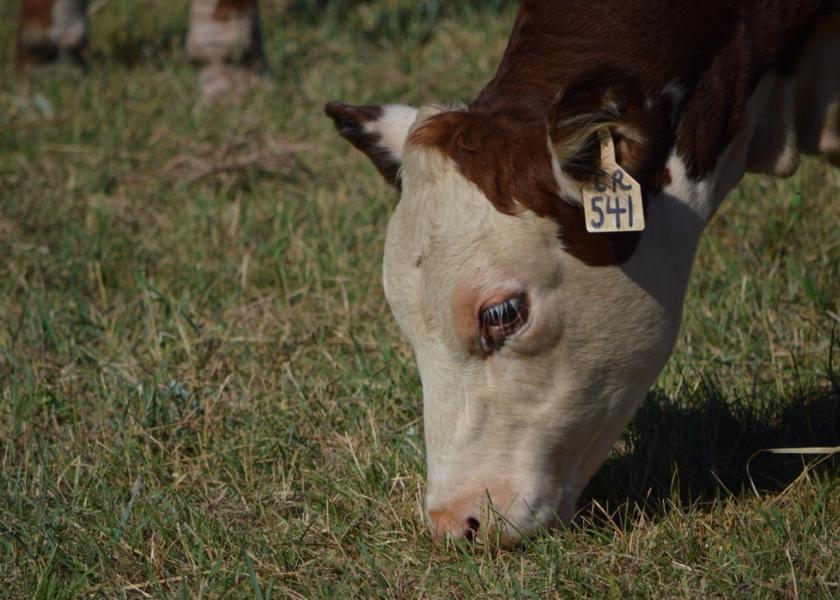Pass on the Parasites

Plan Parasite Control to Maximize Efficacy
While drought is a long-term disaster, that doesn’t mean parasite control has to follow suit. As spring green-up gets underway, special care should be taken to properly manage cow herds on drought-stressed pastures, especially when it comes to parasite control.
According to Morrilton, Arkansas, Veterinarian Dr. Cy Shurtleff, it’s common during drought for cattle to have grazed pastures down to levels they normally wouldn’t have simply as a means of survival. Because parasites live in the bottom 25% of the grass level, cattle might be forced to pick up more infective larvae than they usually would.
Tell-Tale Signs of Parasites
While it might be easy to think parasites aren’t a problem because grass isn’t readily available during a drought, Zoetis Beef Technical Services Veterinarian Dr. Mark Alley says they can live under the soil.
“These parasites are adapted to living,” Alley explains. “So, they can live down underneath the soil just to hibernate.”
When that happens, producers should look for specific signs that cattle are infected and consider modifying their parasite control strategies to ensure herd health.
“Typical heavy parasitism is weight loss, dull hair coats, loose stools or diarrhea and un-thriftiness,” Shurtleff explains.
Once deworming takes place, Shurtleff says you’ll start to notice a quick turnaround in animal health if they’re infected with parasites.
“Usually, within two weeks or so, we start seeing good changes in hair coat, and they pick up weight,” he says. “Within three to five days, stools start firming up.”
Plan Control to Maximize Effectiveness
While blanket deworming isn’t often recommended, Shurtleff says that coming out of a drought, deworming the whole herd can help get cows and calves back on the right path.
Alley adds that to get optimal parasite control, consider deworming about four-to-six weeks after grass begins to grow.
While decades ago, the industry-standard might have been regular dewormings, Shurtleff says resistance prompts a shift from that mindset.
“The theory of refugia is letting some of the non-resistant worms stay in the herd so that we have a population that is non-resistant to our parasite control ingredient,” he explains. “To do that, we must not worm everything in the herd all the time.”
Following the rules of refugia, Shurtleff says a percentage of middle-aged cows would go un-wormed if their health is not affected.
“If we’re going to practice refugia in a herd, the animals we do deworm must receive good efficacy,” Shurtleff says.
A dual deworming program can be helpful in achieving that efficacy, he adds.
“Using a macrocytic lactone—an injectable or pour-on—in combination with a benzimidazole— or drench—can help producers achieve about 99% efficacy in parasite control,” Shurtleff says.
An Expense Worth the Cost
While many farm input costs are high this spring, Alley doesn’t recommend cutting corners in herd health.
Parasite management is a key component in ensuring both cows and calves receive the full benefit of the nutrients they’re being fed, Alley says. So, he says to look beyond animal health inputs when it comes time to trim farm expenses.
“Animal health, including vaccines and parasite control, account for about 10% of the overall cost for maintaining a cow herd,” Alley says. “We know that if we start removing those inputs, we can make a really bad situation even worse if cattle get exposed to viruses or if we cheat on parasite control.”
Cutting corners in herd health not only impacts productivity, Alley says, but also the animal’s ability to fight other disease challenges.
“Drought is a long-term disaster,” Shurtleff adds. “We need to get cattle recovery time as short as we can. We need to make sure we don’t have any parasites to pull them down.”
Both Alley and Shurtleff recommend working with a local veterinarian to establish the most effective parasite control program for your herd.







